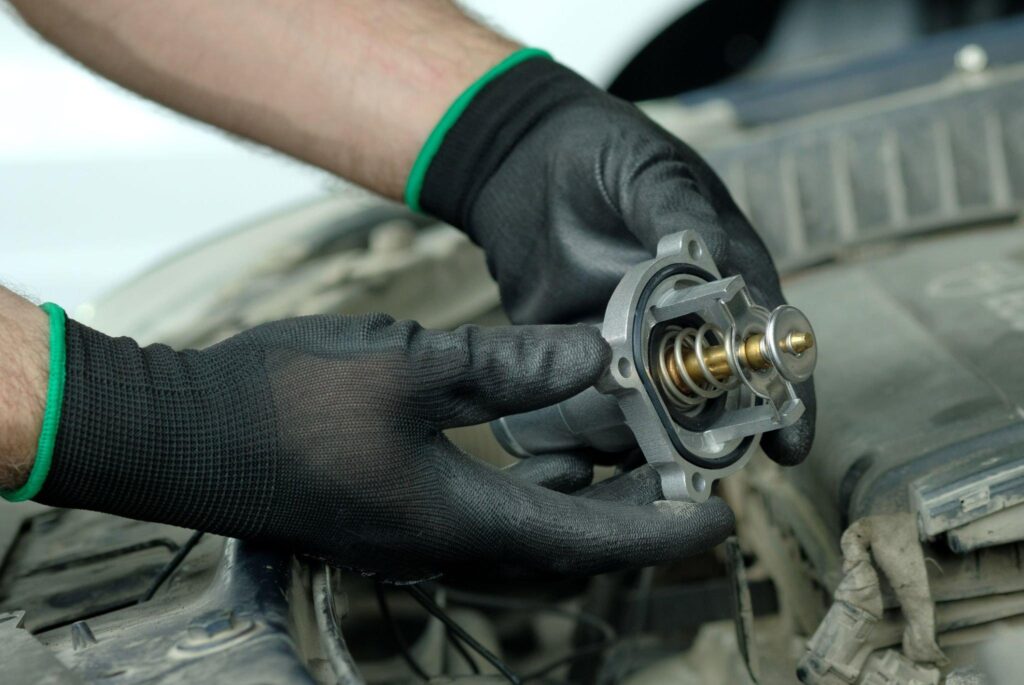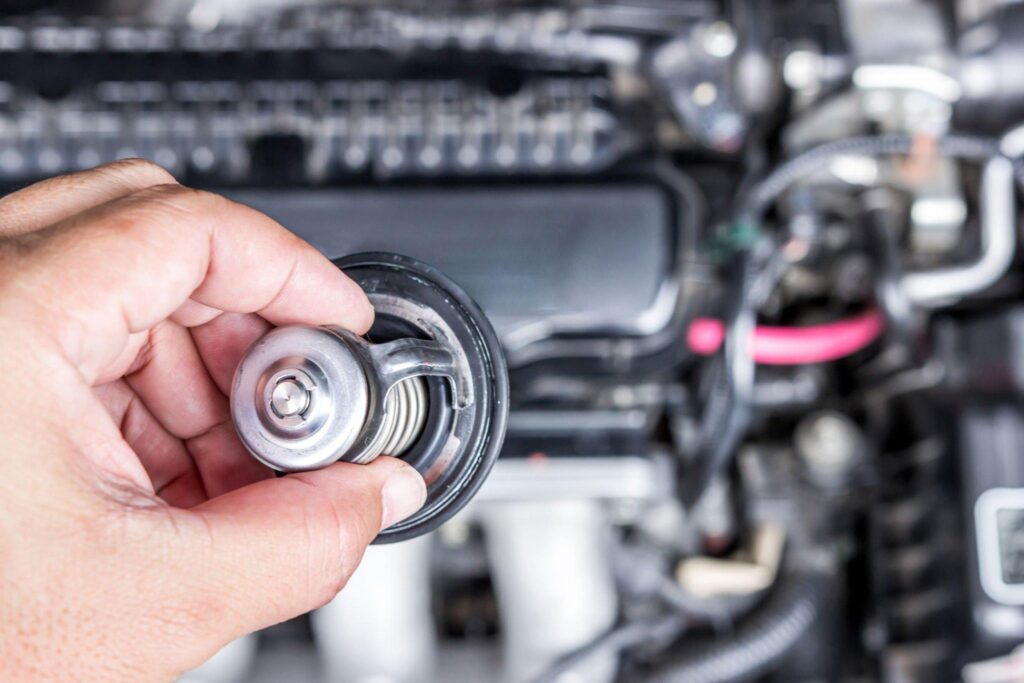A vehicle’s engine is a complex system that requires precise temperature and pressure regulation to operate efficiently. The thermostat is a crucial component in this system and plays a crucial role in regulating these factors. But wait, can a stuck open thermostat cause coolant loss? Well, a malfunctioning thermostat can cause several issues, including coolant loss in the engine.
Let’s explore the relationship between a stuck open thermostat and coolant loss, providing an in-depth analysis of how this malfunction occurs, the symptoms to look out for, and the potential consequences for your vehicle’s engine.
Role Of The Thermostat In Regulating Engine Temperature
The thermostat’s primary function is to ensure that the engine operates at an optimal temperature, neither too hot nor too cold. This temperature range is usually between 195 and 220 degrees Fahrenheit, depending on the vehicle model.
Normal Operation Of The Thermostat
The thermostat works by opening and closing a valve controlling the coolant flow between the engine and the radiator. When the engine is cold, the thermostat remains closed, blocking the flow of coolant to the radiator and allowing the engine to warm up quickly. Once the engine reaches its operating temperature, the thermostat opens, allowing the coolant to flow through the engine and into the radiator. This process ensures that the engine maintains a consistent temperature, preventing overheating or underheating, which can lead to engine damage. The thermostat operates continuously, adjusting the coolant flow to maintain the optimal temperature range.
Can A Stuck Open Thermostat Cause Coolant Loss?

When a thermostat gets stuck open, it remains open, allowing the coolant to flow freely through the engine and the radiator. As a result, the engine may not reach its optimal operating temperature, leading to several issues:
Consequences Of A Stuck Open Thermostat
- Reduced engine performance: It can result in reduced engine performance, as the engine’s computer may not receive the necessary input signals from the engine sensors to operate at its optimal level.
- Poor fuel economy: A cooler engine can cause poor fuel economy, as the fuel injection system may not deliver the correct fuel to the engine, resulting in inefficient combustion.
- Increased emissions: A cooler engine can also produce higher emissions levels, as the catalytic converter may not function optimally at lower temperatures.
- Overcooling of the engine: A stuck open thermostat can cause the engine to overcome, leading to poor combustion, increased engine wear, and damage to engine components.
- Reduced heater performance: A cooler engine can reduce the heat output from the vehicle’s heater, making it less effective at warming its interior.
Note that a stuck open thermostat can also cause the engine to run continuously in open loop mode, leading to higher fuel consumption, increased emissions, and reduced engine performance.
You May Also Like: Why Is My Car Still Overheating After Replacing Thermostat And Water Pump?
How An Open Thermostat Causes Coolant Loss

A stuck open thermostat cause coolant loss in the following ways:
- Continuous Flow: The thermostat regulates the flow of coolant between the engine and the radiator. If it’s stuck open, the coolant will continuously flow through the engine, decreasing its level.
- Overheating: The continuous flow of coolant also means that it won’t stay in the radiator long enough to dissipate the heat generated by the engine, resulting in overheating. Overheating can cause the coolant to boil and evaporate, leading to further loss.
- Lack of Pressure: The thermostat helps maintain pressure in the cooling system, which prevents it from boiling at normal operating temperatures.
All of these factors can contribute to coolant loss, ultimately resulting in engine damage if not addressed promptly. Therefore, keep checking for an open thermostat if you notice a decrease in coolant level.
Signs And Symptoms Of An Open Thermostat
A stuck open thermostat in a car engine can cause a variety of symptoms, including:
- Coolant temperature lower than normal: A cooler engine is one of the most common symptoms of a stuck open thermostat. If the engine temperature gauge shows a reading lower than normal or the engine takes longer to warm up, it may indicate a stuck open thermostat.
- Poor fuel economy: It can cause poor fuel economy, as the fuel injection system may not deliver the correct fuel to the engine, resulting in inefficient combustion.
- Engine overheating: A stuck open thermostat can cause engine overheating. This can happen if the thermostat fails to close, allowing too much coolant to circulate through the engine and the radiator, reducing the engine’s ability to maintain the optimal temperature range.
- Reduced heater performance: A cooler engine can reduce the heat output from the vehicle’s heater, making it less effective at warming its interior.
- Check Engine light: A stuck open thermostat can cause the engine to run continuously in open loop mode, leading to higher fuel consumption, increased emissions, and reduced engine performance. This can trigger the Check Engine light to illuminate.
- Strange sounds: If you notice any strange sounds coming from your car’s radiator, such as rumbling, boiling, or knocking, it could be a sign of a faulty thermostat. If it happens randomly, it’s a clear indication that something is not right. Don’t ignore this warning sign, as they could be a larger issue.
If you notice any of these symptoms, have your car checked by a qualified mechanic to diagnose the problem and replace the thermostat.
Possible Reasons For A Stuck Thermostat
- Thermostat failure: The thermostat can fail mechanically, electrically, or electronically and become stuck in the open position.
- Low coolant levels: When the coolant level in the engine is too low, it can prevent the thermostat from functioning properly and getting stuck in the open position.
- Faulty temperature sensor: If the engine temperature sensor is faulty, it can send an incorrect signal to the thermostat, causing it to remain stuck in the open position.
- Cooling system blockage: If the cooling system is blocked or restricted, it can cause the engine to overheat, which can cause the thermostat to remain open.
- Worn or damaged radiator hoses: Worn or damaged radiator hoses can cause the coolant to leak out of the engine, which can cause the thermostat to become stuck in the open position.
- Incorrect thermostat installation: If the thermostat is installed incorrectly, it can cause it to remain stuck in the open position.
Solutions
If your car’s thermostat is stuck in the open position, plan to replace it as soon as possible to ensure proper engine temperature control. Driving with a faulty thermostat can cause reduced fuel efficiency, increased emissions, and potentially cause other problems with your vehicle.
To replace the thermostat, you’ll need to drain the coolant from the engine, remove the old thermostat, and replace a new one. It’s important to use the proper thermostat for your specific vehicle make and model.
If you’re not comfortable performing this repair yourself, it’s recommended that you take your car to a certified mechanic or auto repair shop to have the thermostat replaced. They can also check for any other issues that may have caused the thermostat to fail and ensure that your vehicle is running properly.
Replacing Thermostat Costs
The cost of replacing a stuck open thermostat can vary depending on several factors, such as the type of thermostat, the make and model of your heating or cooling system, and the labor costs in your area.
If you have a basic mechanical thermostat, it may be relatively inexpensive to replace. You can find basic thermostats for as little as $20 to $90 at stores or retailers. However, the cost can be higher if you have more advanced luxury or sports cars.
Buying a thermostat, labor costs may be associated with replacing the thermostat, especially if the thermostat is in a hard-to-reach location or if the wiring needs to be updated or modified. The cost can be higher if you hire a professional to replace the thermostat. The labor cost can vary depending on the expertise and experience of the person performing the work and their location.
Verdict
If you spot any symptoms of a stuck open thermostat in your vehicle, simply bring it to a trusted mechanic, who will diagnose the issue and replace the thermostat if needed. Remember, with regular maintenance and careful attention to your car’s cooling system, you can prevent any problems related to the thermostat and enjoy peak performance from your engine.
Do you know why is your car still overheating after replacing the thermostat and water pump? Let’s get to the root of the issue and find a solution! Check out – Why Is My Car Still Overheating After Replacing Thermostat And Water Pump?
Our Popular Post:
What If I Accidentally Put Premium Gas Into My Car?
The Essential Guide to Blown AC Fuse In Car Symptoms
Is it OK to Sit in Car with AC On? Here’s the Answer
Blown Fuse Car Won’t Start? Here’s What You Need to Know
Can I Apply Clear Coat the Next Day? The Ultimate Guide
What to Do When Your Battery Light Stays On After Key Pulled?


